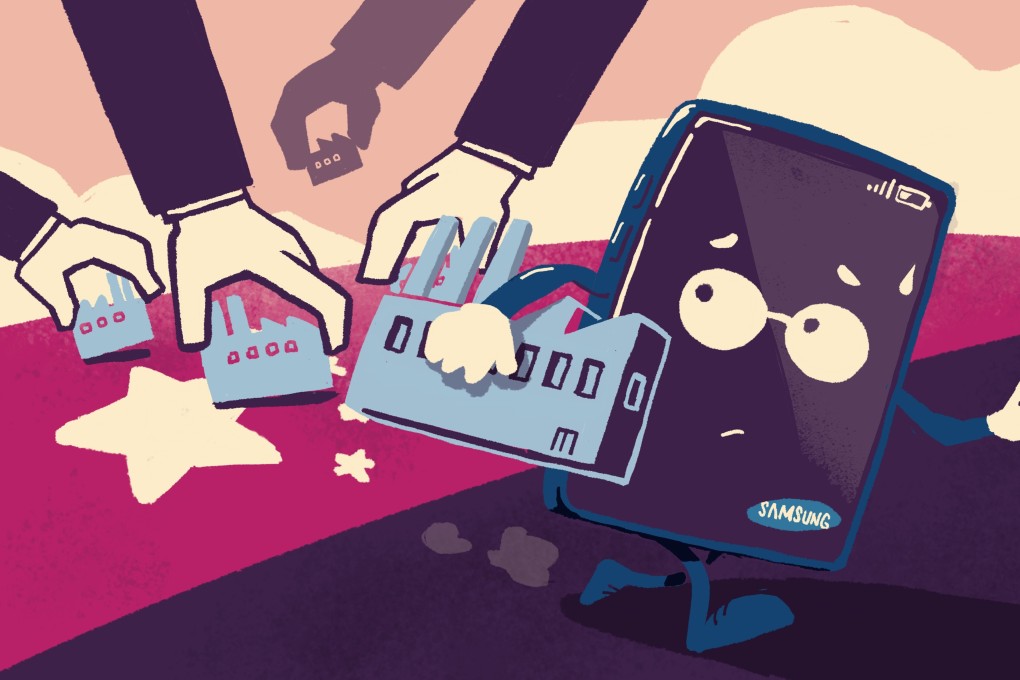China manufacturing town is again buzzing after being crippled by Samsung’s departure in 2019
- Two years after Samsung closed its last smartphone factory in China, the abandoned community gets a second chance
- Some foreign companies are rethinking or delaying plans to diversify production away from China, despite US tariffs

Li Dong is busy these days decorating his new barbecue restaurant in a northern Pearl River Delta community that is rumbling back to life two years after Samsung closed its smartphone factory that had operated there for almost three decades.
Nearby businesses – from shops to restaurants surrounding the compound – closed their doors, and local property prices plunged.
“Eight out of 10 rooms here were empty at that time, and we were all bemoaning that locals and their livelihoods wouldn’t be able to make it without Samsung’s factory,” Li said. “But now you can see dozens of small and medium-sized restaurants are opening here.”
And local landlords of “cramped and simple flats” are no longer hard-pressed to rent out their properties, he said. Instead, they are preparing for the arrival of thousands of workers.
The 120,000-square-metre (1.3 million sq ft) factory that once housed Samsung’s operations still stands, but the company’s giant blue logo has been replaced with that of TCL Tonly – a Chinese manufacturing services provider in the audiovisual products industry, a subsidiary of China’s consumer electronics giant TCL Group that employs more than 75,000 employees globally.